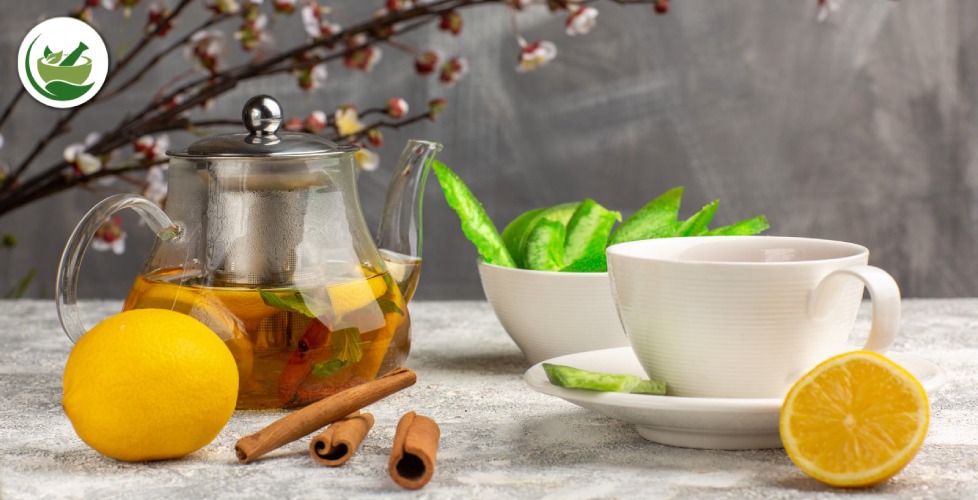
The Fragrant Tea Olive, known scientifically as Osmanthus fragrans, is a plant that captures the essence of nature’s perfumed gifts. This evergreen beauty, native to Asia, has been a cherished part of gardens and cultural traditions for centuries. Its small yet incredibly fragrant flowers have the power to transform any garden into an aromatic paradise, making it a sought-after plant for garden enthusiasts and landscapers alike.
Read more blogs about olive leaf tea!
Elegance and Resilience in One Plant
Beyond its captivating fragrance, It is a symbol of elegance and resilience. It flourishes in a variety of climates and conditions, showcasing a versatility that adds to its appeal. With its lush green foliage and delicate blossoms, it offers a visual treat throughout the year, particularly when it bursts into bloom, filling the air with its signature sweet and fruity aroma.
Exploring the World of Fragrant Tea Olives
This blog delves into the world of the Fragrant Tea Olive, exploring its botanical characteristics, cultivation tips, landscaping uses, and cultural significance. Whether you’re a seasoned gardener or a curious reader, the enchanting world of the Fragrant Tea Olive awaits to fill your senses and gardens with its natural splendor.
Botanical Profile of Fragrant Tea Olive
A member of the Oleaceae family stands out in the plant kingdom for its unique combination of visual and olfactory appeal. This evergreen shrub or small tree can reach heights of up to 20 feet, though it often stays smaller in cooler climates. Its leaves are dark, glossy green, providing a year-round backdrop of lush foliage.
Varieties and Their Distinct Features
There are several varieties of Fragrant Tea Olive, each with its own unique qualities. The most common is Osmanthus fragrans var. aurantiacus, known for its orange blossoms. Another popular variety is the Osmanthus fragrans ‘Fudingzhu’, which is renowned for its profuse flowering. Each variety shares the characteristic sweet fragrance, but with subtle differences in aroma and bloom color, ranging from white to orange.
Natural Habitat and Growing Conditions
Originally from Asia, particularly China and the Himalayas, Fragrant Tea Olive is well-adapted to a range of environments. It loves well-drained soil and may grow in both full sun and light shade. This plant is hardy in USDA zones 7 through 10, making it suitable for a variety of landscapes. The Fragrant Tea Olive’s resilience to different growing conditions contributes to its popularity among gardeners worldwide.
Cultivation and Care
Successfully growing and maintaining a Fragrant Tea Olive requires an understanding of its basic needs, ensuring it thrives and continues to grace your garden with its delightful aroma.
Planting and ideal soil conditions
The journey to a healthy Fragrant Tea Olive begins with proper planting. Choose a location that offers well-drained soil; excessive moisture can lead to root rot. While the plant tolerates a range of soil types, it flourishes in soil that is slightly acidic to neutral in pH. If planting multiple shrubs or trees, ensure enough space between them to allow for air circulation and growth.
Watering, Sunlight, and Fertilization Needs
Regular watering is crucial, especially during the plant’s formative years and in dry conditions. However, it’s important to avoid overwatering. The Fragrant Tea Olive appreciates full sun to partial shade, with at least four hours of direct sunlight for optimal flowering. Fertilization should be done in early spring with a balanced, slow-release fertilizer to encourage robust growth and abundant blooms.
Pruning and maintenance
Pruning is an essential part of care, not just for maintaining shape but also for promoting healthy growth. It’s best done after the flowering season, focusing on removing any dead or diseased branches and shaping the plant. Regular checks for pests and diseases will keep your Fragrant Tea Olive in good health, ensuring it continues to be a sensory delight in your garden.
With these care tips, your Fragrant Tea Olive will not only survive but thrive, becoming a cherished part of your garden landscape for years to come.
Landscaping with Fragrant Tea Olive
Incorporating the Fragrant Tea Olive into your garden landscape can transform your outdoor space into a sensory retreat, filled with visual beauty and captivating aromas.
Integrating Fragrant Tea Olive in Garden Design
The versatility of Fragrant Tea Olive makes it a fantastic choice for various landscaping designs. As a standalone specimen, it can be a striking focal point, especially when in bloom. For those looking to create a natural screen or hedge, its dense foliage provides excellent privacy and sound absorption. In mixed borders, the Fragrant Tea Olive adds height and structure, complementing flowering plants and shrubs with its evergreen leaves and fragrant blossoms.
Suitable companion plants
When choosing companion plants, consider those that thrive under similar conditions. Plants like azaleas, rhododendrons, and camellias not only share similar soil and light preferences but also offer contrasting colors and textures, enhancing the overall aesthetic of your garden. Perennial flowers and ornamental grasses can also complement the Fragrant Tea Olive, creating a diverse and dynamic landscape.
Benefits of Landscape Architecture
It is not just about beauty; olive-leaf tea offers practical benefits. Its ability to adapt to various soil types and conditions makes it a reliable choice for gardeners. Additionally, its evergreen nature ensures year-round interest, while its fragrant blooms add an extra layer of enjoyment, attracting pollinators and enhancing the garden’s biodiversity.
Incorporating Fragrant Tea Olive into your landscape offers a blend of aesthetic charm and practicality, making it an excellent choice for both new and experienced gardeners.
Fragrant Tea Olive in Culture and Symbolism
It is not just a plant of exceptional beauty and aroma; it also carries rich cultural and symbolic meanings that add depth to its horticultural appeal.
Cultural Significance in Different Regions
In its native Asian countries, It holds a special place in cultural traditions. In China, it’s often associated with good fortune and is frequently found in classical gardens. The Japanese regard it as a symbol of elegance and patience, often using it in traditional gardens and tea ceremonies. Its pervasive fragrance has also made it a staple in Asian perfumery, lending its sweet scent to various fragrances.
Symbolic Meanings Attached to the Plant
Beyond its physical attributes, it is imbued with symbolism. It’s often seen as a representation of peace, harmony, and nobility. The resilience and longevity of the plant symbolize endurance and steadfastness, qualities that are highly esteemed in many cultures. Its blooming season, which coincides with the autumn festival in some regions, ties it to themes of reunion and familial love.
Use in Festivals, Traditions, and Perfumery
The significance extends to its use in various festivals and traditions. In certain regions, people use its flowers as decorations during important cultural celebrations. Perfumers have captured the subtle yet distinct fragrance of the Fragrant Tea Olive in oils and scents, making it a cherished ingredient in the fragrance industry.
The cultural and symbolic facets enrich its value, making it more than just an ornamental plant. It’s a living symbol of beauty, fragrance, and cultural depth.
Conclusion
The Fragrant Tea Olive is a remarkable blend of sensory appeal and cultural significance. Its enchanting fragrance and year-round beauty make it a cherished addition to any garden. Beyond its aesthetic value, olive plant embodies rich symbolism and tradition, resonating deeply across various cultures. Embracing the Fragrant in your garden is not just about enjoying its beauty but also about connecting with a piece of living history.






